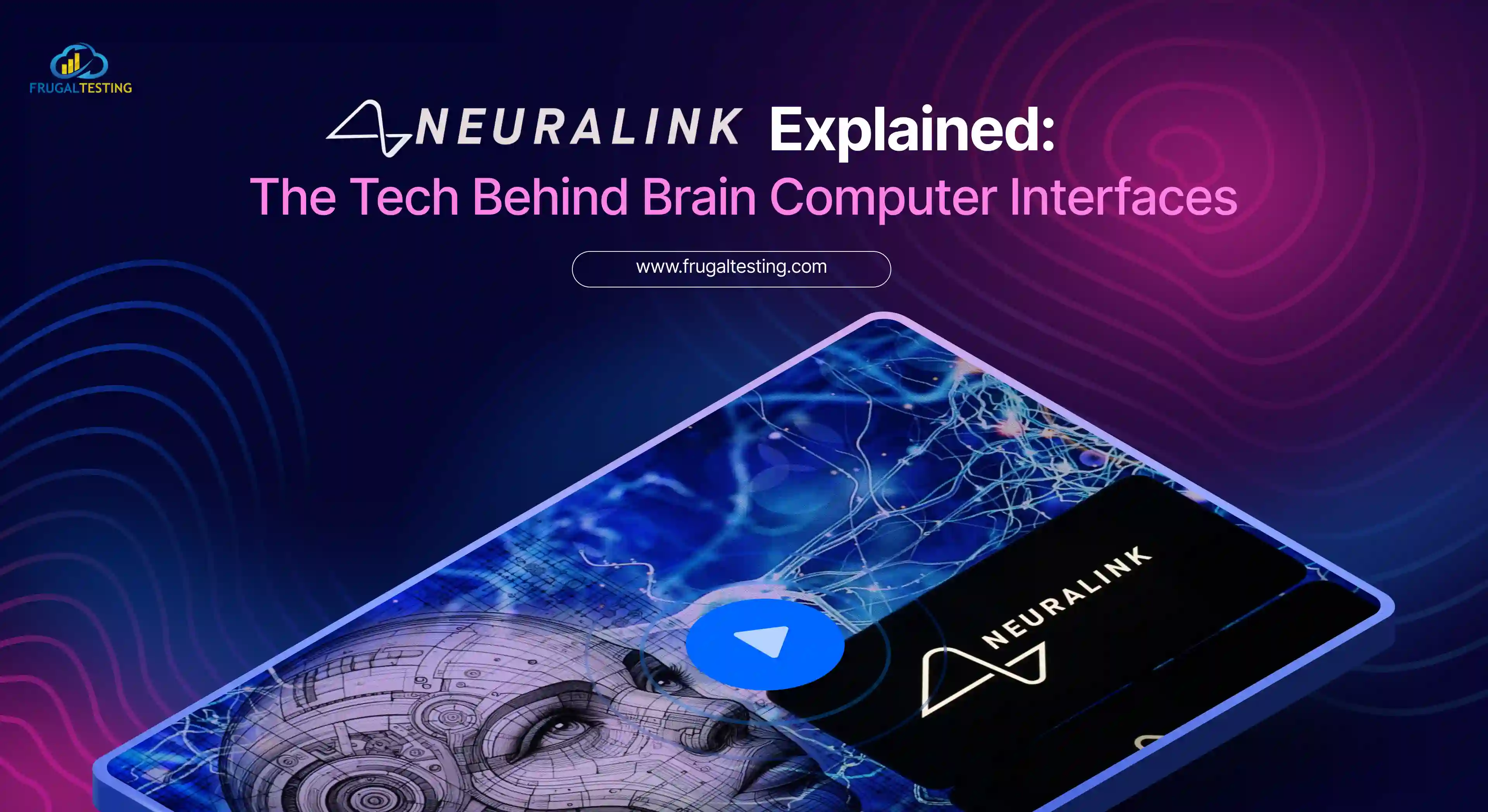AI-driven test prioritization👨🏼💻 is one of the methods developed in recent times for effective optimization of the efforts of teams, focusing more on critical areas. The traditional methods typically prioritize tests based on fixed parameters such as functionality or code coverage.
However, AI🤖 brings the notion of being able to assess risks dynamically and respond dynamically to changing requirements. Thus, it would run the most impactful tests early in the testing cycle. This transformation will enhance productivity but the high-risk🚨 area may receive more attention, thus reducing the chances of making costly post-release defects.
The significant benefits of AI-driven test prioritization are that it can involve real-time data such as user behavior, historic defect patterns, and software usage metrics in assessing the areas that incur the highest risk. Hence, their quality improved overall, and their customer experience also improved.

The Importance of Test Prioritization⏳
Test prioritization is a structured approach in software development where the most important aspects of an application are tested first. This practice focuses on high-risk ☣ areas or core functionalities☢️ to reduce risk exposure and identify critical bugs early on, improving the overall security posture. It allows teams to minimize manual effort and ensures that risk levels are considered, enabling strategic decisions based on valuable insights.

By prioritizing🛑 test cases based on risk, usage frequency 〰, and business importance, development teams can efficiently allocate resources, such as personnel and infrastructure, and optimize their security team efforts. This results in higher productivity and the delivery of quality software. Test prioritization provides a wide range of benefits, including better decision-making and timely detection of issues, ensuring that must-have features are properly tested for smooth production releases.
AI in Software Testing 🤖
Artificial intelligence🤖 is a revolutionary force in software testing. Artificial intelligence tools and machine learning technologies can automate routine, time-consuming tasks, whereby complex issues are dealt with at high-level stages, leaving little scope for human interference as AI builds precise test executions from their test case generation.
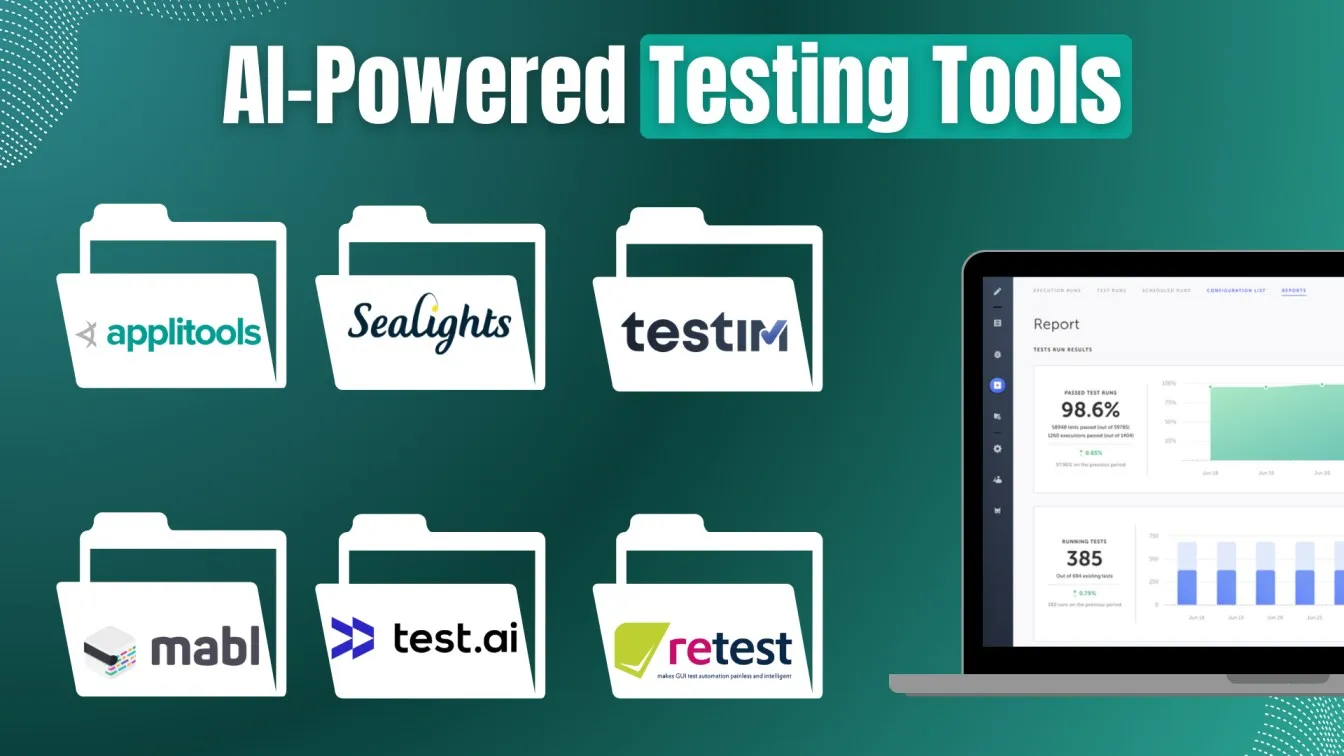
However, what really is important and special about AI in software testing is its capability 💪to analyze enormous datasets to identify various patterns and potential defects that even a human could miss. The next point is that AI can predict failure points, optimize test cases, and improve coverage in such a way that all the serious areas will be subjected to proper testing with no redundancy involved.
Overview of AI Technologies in Testing
AI-driven testing ֎🇦🇮 is transforming the art of software testing by using advanced technologies to enhance efficiency and effectiveness. AI-driven testing strategies♟️ leverage advanced analytics and machine learning algorithms to analyze immense test data, detect patterns, and predict probable defects with predictive insights. This enables more informed decision-making processes by focusing on high-risk areas that are critical to the software's performance.
The incorporation of AI helps improve accuracy and time management, ultimately boosting software quality and reliability. AI-based assessments📋 also utilize historical data and user behavior to prioritize testing in high-impact areas, ensuring efforts are concentrated where they are most needed. However, maintaining the human element in testing is crucial, as human values guide strategic decisions and add essential context beyond what AI can provide.

- AI Technologies In Testing:
- Predictive Analytics and Defect Prediction:
- Predictive analytics is usually the backbone for many applicability tests of AI. Predictive analytics allow the system to be able to predict possible defects before occurrence. It, therefore, not only increases the chances of detection but also allows testers to focus on riskier areas first.
- Intelligent Test Automation
- AI elevates conventional automation to another level. It offers the capability of creating and upgrading test scripts dynamically. One does not solely rely on the already existing scenarios, as AI can shift because the software will vary; hence, processes will be more powerful.
- Risk-Based Test Prioritization
- Risk-based prioritization is one of the more effective implementations of AI for the purpose of testing. AI-based systems can also estimate the risks of different features or modules based on user behavior data and system performance data.
- Predictive Analytics and Defect Prediction:
Benefits of AI-driven approaches
AI-driven approaches🎯 increase the strengths of software testing, which consist of significant efficiency and effectiveness improvements in the testing process. Advanced algorithms and machine learning techniques🤖 are used so that precision and adaptability can be gained to greater extents with new methods of testing strategies.
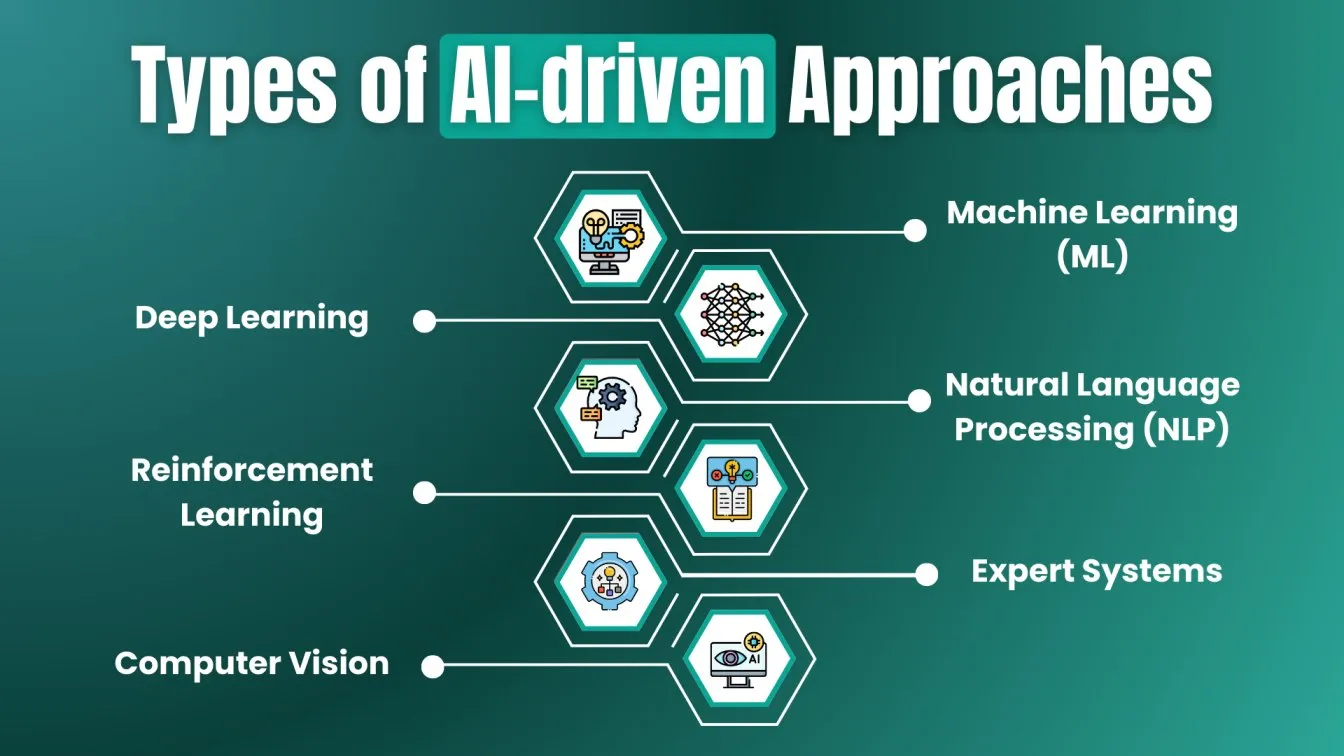
Finally, because software testing using AI-driven approaches provides higher efficiency and accuracy, such approaches accelerate test execution, improve defect detection, cover a more extensive test area, utilize fewer people to do better jobs, scale with organizational growth, and save more money.
Understanding Risk Assessment
Risk assessment👷 in software testing involves detecting potential risks that could impact the quality of a software product, including complex features, defect likelihood, and user impact. It helps prioritize test cases to maximize value while considering project constraints like time and budget.
AI-driven risk assessment enhances traditional approaches by using machine learning algorithms🤖 to analyze large datasets, uncover patterns, and make more precise predictions about potential risks and strategic decisions.
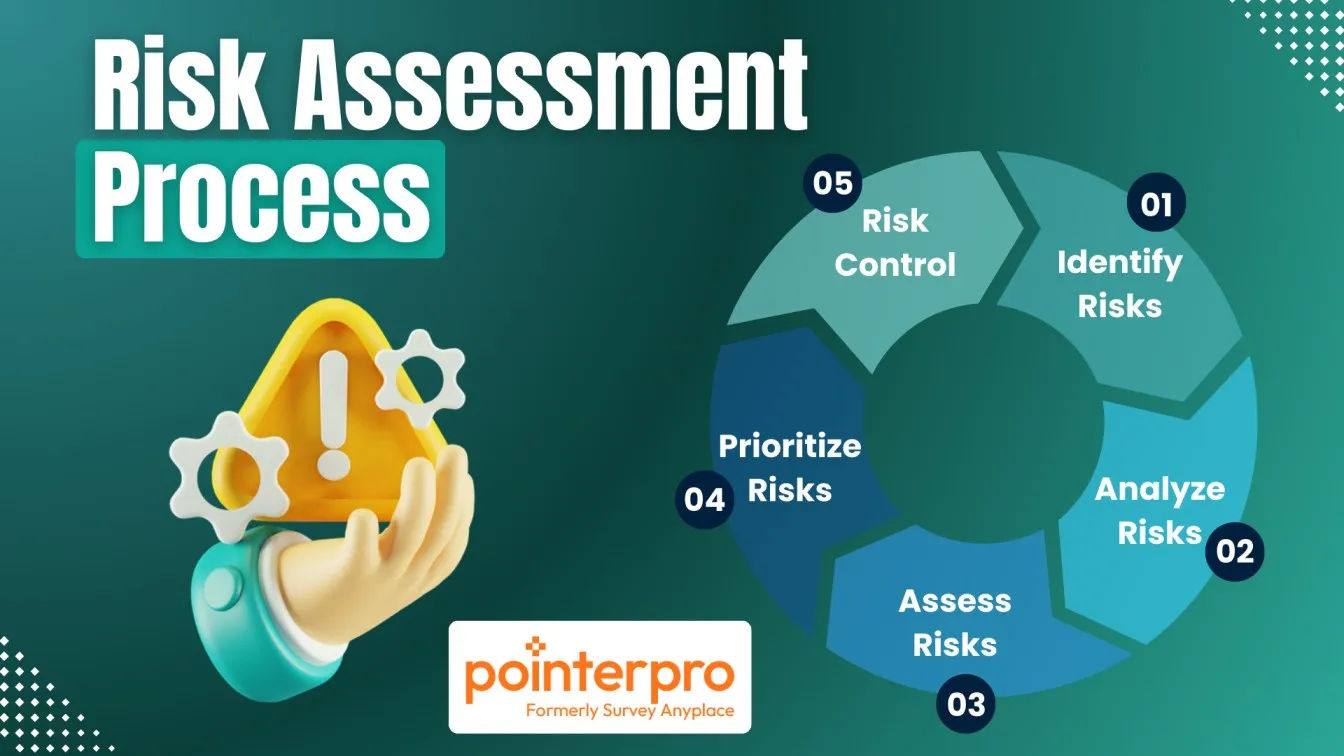
For cyber security risk assessment or IT security risk assessment, especially in industries with compliance needs like HIPAA security risk assessment, templates📑, and tools are used to ensure thorough evaluation of information security threats. Implementing a cyber security risk assessment template📑 helps streamline the process of identifying vulnerabilities and mitigating risks.
Identifying potential risks in software
Identifying the high-risk areas⛔ in the software is one of the critical phases in development since problems are noticed early enough before they arise and affect the users or business.

This identification🕵️♀️ encompasses looking at a variety of weaknesses in the system, bottlenecks that may arise in performance, and potential integration problems. Identifying these high-risk areas early will enable teams to prevent them in the development process, thus reducing costly fixes afterward.
Risk Assessment Methodologies🔬
- Qualitative Risk Assessment:
- Risk identification based on experience, judgment, and brainstorming sessions
- Ranking scale of identified risks based on perceived impact and likelihood
- Quantitative Risk Assessment:
- Numerical data and statistical approaches are exploited to rank and analyze risks
- Probabilities as well as potential impacts are calculated through simulation tools like Monte Carlo
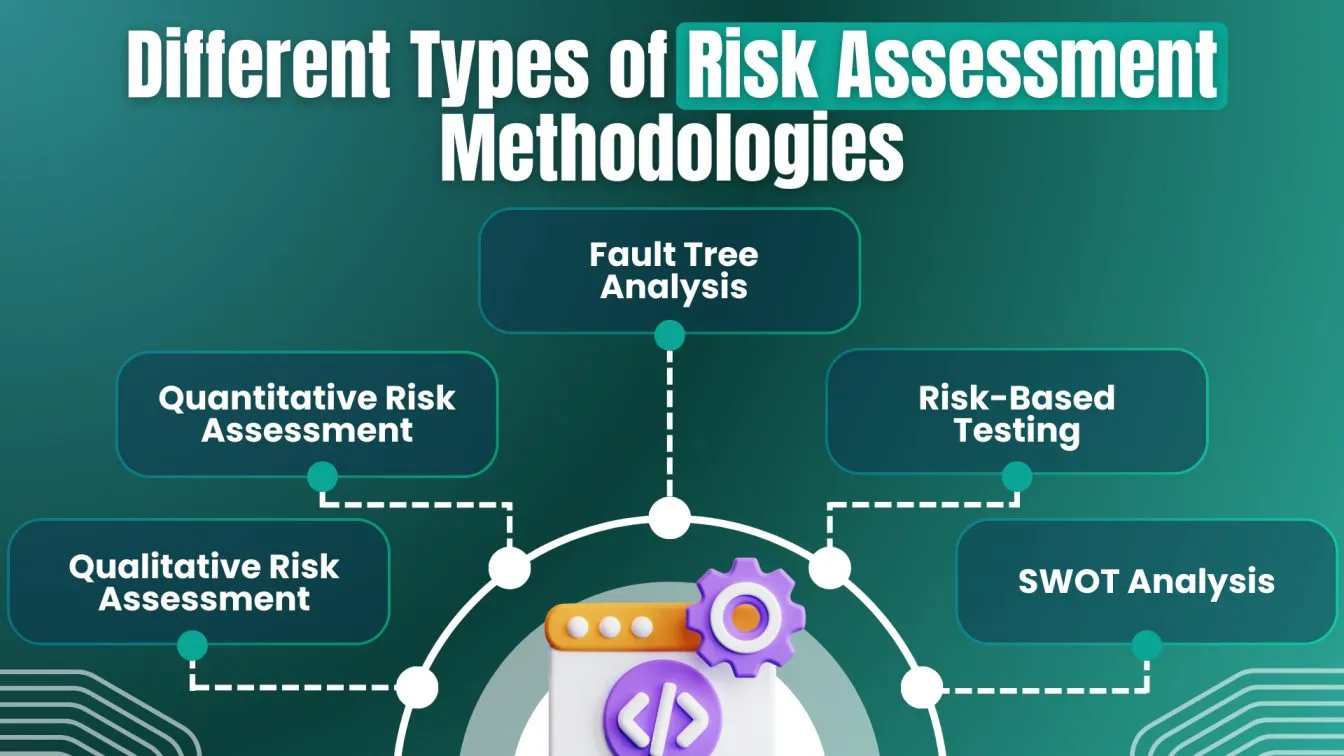
- Fault Tree Analysis (FTA):
- The top-down visual approach is where the root causes of system failures are traced.
- Identifies potential failure combinations leading to the main risk.
- Risk-Based Testing (RBT):
- Testing is prioritized based on how critical components of the system are and on the likelihood of their failure.
- It ensures that the most vulnerable parts of the software receive more attention.
- SWOT Analysis:
- The method is used in risk analysis since it identifies strengths, weaknesses, opportunities, and threats concerning any project or system
- This gives a broader view as it deals with both internal and external factors.
User Impact Considerations👨
One significant aspect in developing and honing products or services is the effect on users. Their considerations should center on just how changes or new features affect the end user of the system. So it extends as far as usability⚒️, functionality, and usability, among other considerations.
Thus, organizations can ensure that the solutions they present actually meet the needs and preferences of users by seeing how such alterations may impact ease of use, performance, and satisfaction. This proactive approach🙋🏻♂️ has prevented future problems and hence makes the experience of dealing with the product smoother and more pleasant.
Effective communication🗣 and support are also essential because they enable the use of new features while assimilating to changed processes. So as the organization considers user impact while making the decision, they can increase user satisfaction, build trust, and encourage more usage and engagement with their product or service.
Analyzing user feedback and behavior✍️
Analyzing user feedback and behavior is critical as it is the way a user will use and interact with a product or service. It involves gathering information from different sources like surveys, reviews, usage patterns, and even direct feedback✍️ to know general preferences, problems, and emotions that are connected to product or service usage, in terms of overall satisfaction. It also helps identify trends, and pain points, and assess the effectiveness of features or changes.
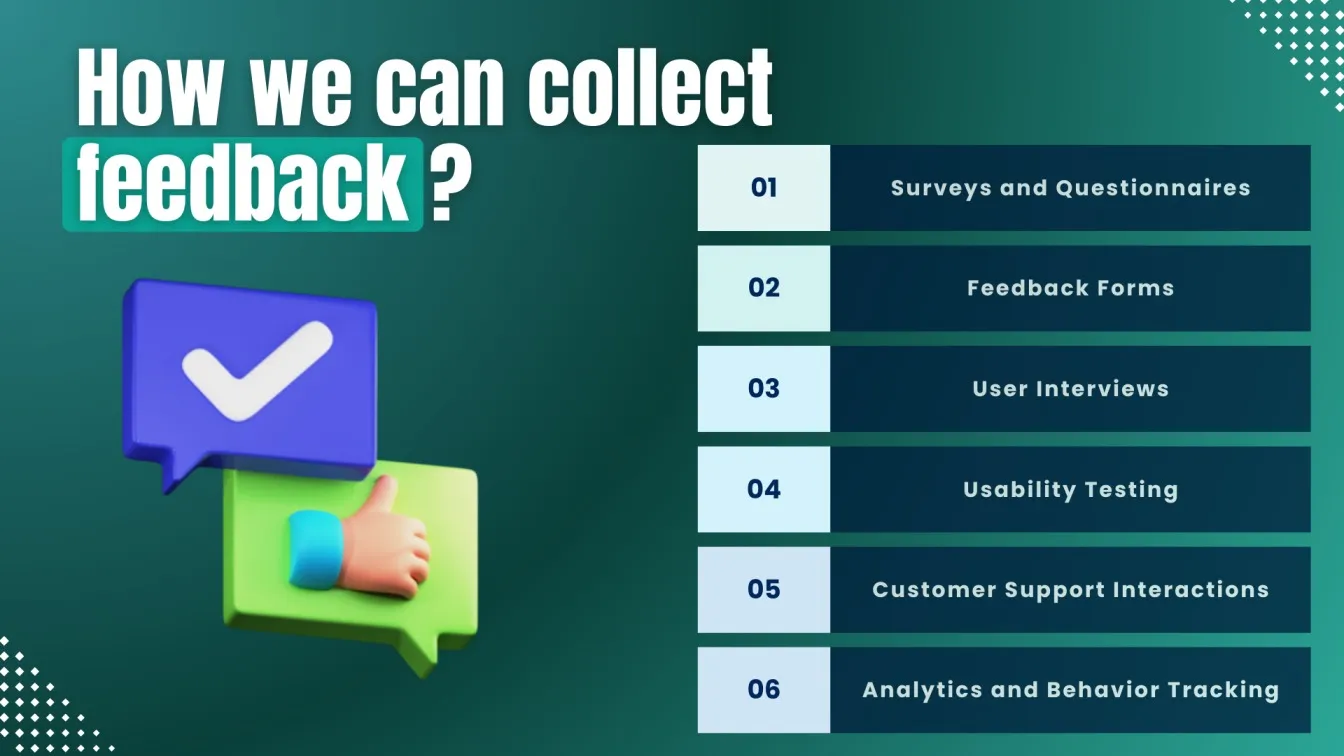
Now, based on this foundation, analyzing user feedback and behavior can enable you to make decisions that are even more data-driven thus much closer to the actual needs and preferences of the user.
This analysis of such information systematically📢 can help you first find out the surface issues and then the deeper, systemic problems that might be causing user satisfaction as well as engagement. Such analysis helps to fine-tune features, optimize performance, and tailor the user experience to meet expectations better.
Enhancing Testing Efficiency🚀
It is a must in today's fast-paced development🛠️ environment to have the enhancement of testing efficiency so that software on time and quality releases can be assured. AI and automation enhance the efficiency of testing through repetitive tasks automating the services provided to the testing processes, reducing the effort at the manual level, and enabling faster loops for feedback.
These technologies allow development teams to run tests far more frequently, over wider ranges of scenarios and provide insights into real-time code quality, which greatly reduces the effort required to identify problems. AI-driven tools will allow test prioritization towards the higher risk and impact area of the software.

This can increase test coverage☂️ and reduce wasteful test execution♻️. Testing cycles will become more streamlined, and organizations may release their software faster without losing quality. It can optimize testing efficiency at the best outcome with human expertise wherein context awareness and the ability to address complex, unanticipated problems occur.
Streamlining Testing processes with AI
AI introduces a change in the whole process of test execution faster⏱️, more efficient, and more intelligent test process. Incorporating AI into the testing lifecycle will help companies automate repetitive work, optimize test cases, and prevent any form of manual intervention.
Predicting defects🆘, prioritizing tests based on risk, and even generating test scripts dynamically helps improve productivity. It lets the development team focus on complex tasks while reducing the time-to-market of the software release.

AI also streamlines continuous testing🔃 in agile environments by processing large volumes of data, identifying patterns, and indicating the best way to enhance coverage and improve accuracy.
Since AI can learn from earlier testing cycles and adapt, the process is fine-tuned further to focus on what is being tested and which critical areas are under that testing and align with business priorities. The incorporation of AI, will not only speed up the testing but help organizations be even more precise and relevant within their testing efforts.
Implementing AI-driven Test Prioritization
The AI-based test prioritization process involves the identification👀 and ordering of test cases according to their business risks and possible defects🛑 in software. For such a purpose, this approach relies on algorithms based on AI and machine learning to analyze the data and determine which tests are the most critical to execute first.
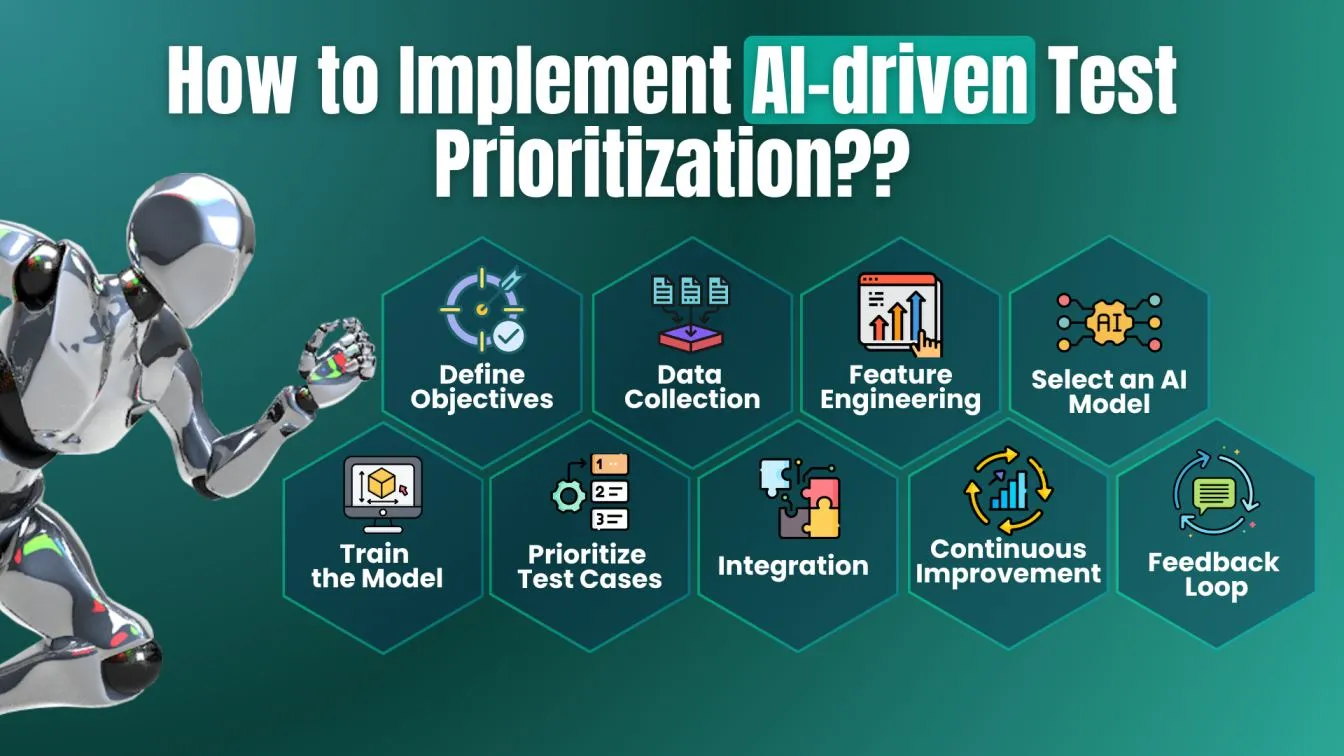
This will help the AI-based tools actually analyze the changes in software, track the test coverage, and predict where the problems are most likely to happen. These tools should then optimize the execution of tests by saving redundant testing and setting more focus on actual risk zones that have a high potential for failures.
This way, by combining the insights from AI with human judgment on capabilities, it can measure the best possible point at which to align the testing strategies according to real-world priorities.
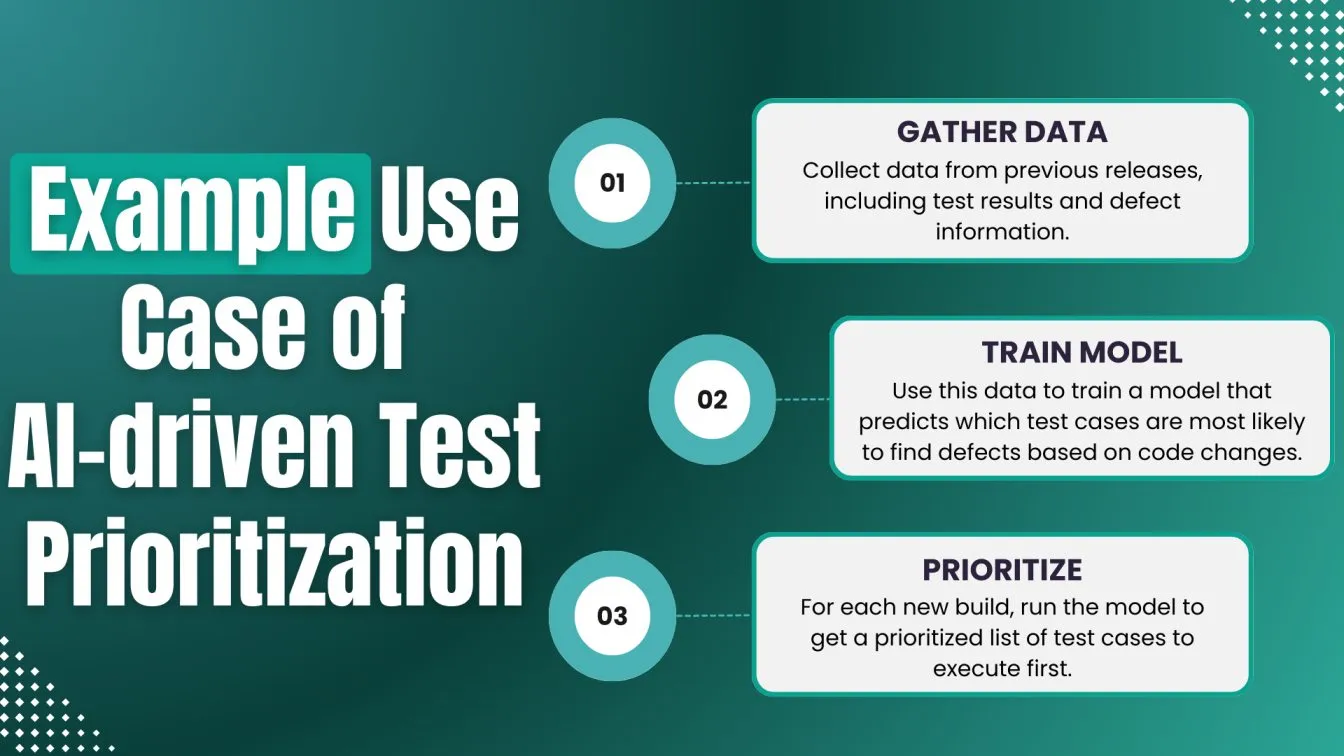
Best practices for integration into existing frameworks
- Assess Current Infrastructure🏗️
- Evaluate existing tools and processes.
- Identify gaps and areas for improvement.
- Select Appropriate AI Tools🤖
- Choose AI algorithms that align with business goals.
- Ensure compatibility with existing systems.
- Continuous Monitoring and Evaluation📊
- Establish metrics to assess the effectiveness of AI-driven risk assessments.
- Regularly review and update models based on new data and insights.
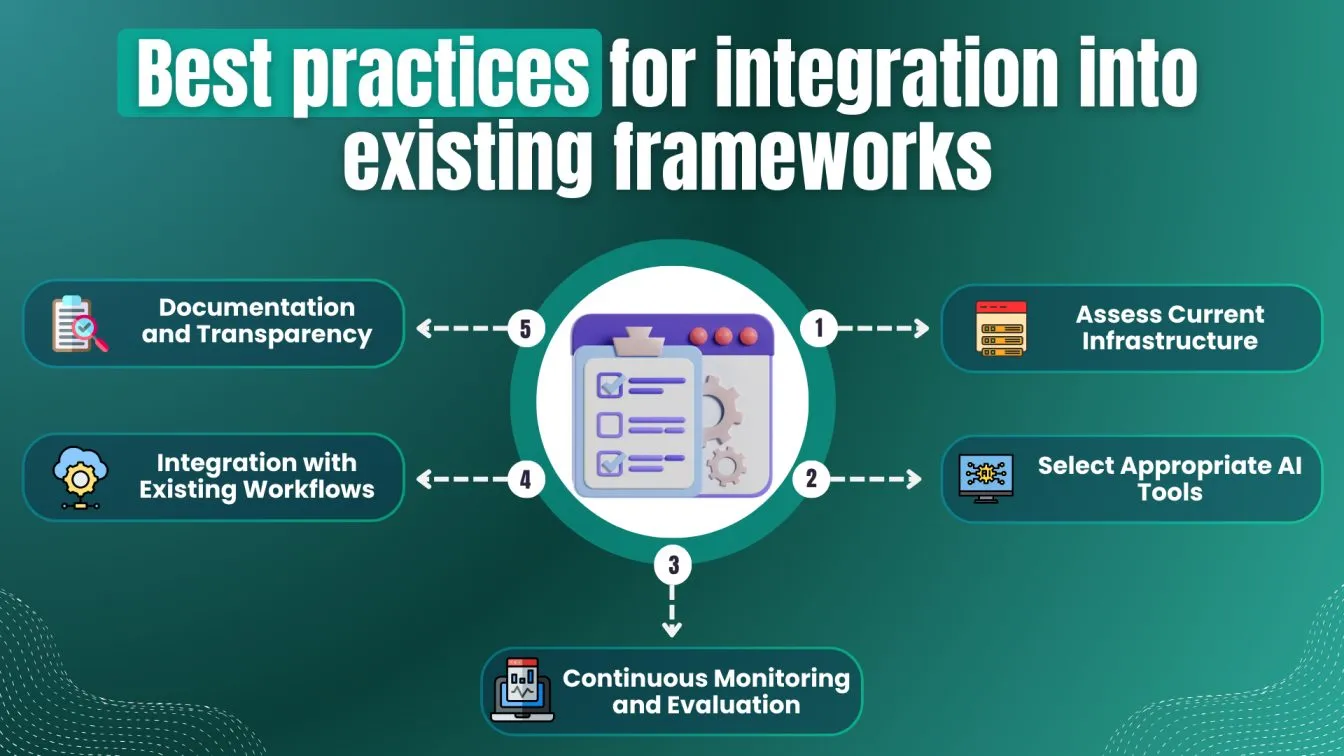
- Integration with Existing Workflows🔀
- Ensure AI tools complement current risk assessment workflows.
- Automate repetitive tasks to enhance efficiency.
- Documentation and Transparency📄
- Document all processes and methodologies used in AI-driven risk assessment.
- Maintain transparency about AI decision-making processes.
Future Trends↗️ in Software Testing
The future of software testing will significantly depend on technological advancement and changes in the development practice. In general, the trend is to integrate AI and machine learning into testing, which can facilitate streamlining test generation based on the behavior of an application and predict defects that may be present in a product.
Future trends in software testing also include the rise of codeless automation, shift-left testing, and the growing importance of continuous testing to ensure quicker releases and higher software quality in agile environments. This helps teams to focus their testing efforts in the right areas.

The second important trend is test automation, which continues to evolve. With codeless automation tools on the rise, testers will be able to create automated tests without much coding knowledge, making automation more accessible. Shift-left testing will force teams to bring testing into earlier phases in the development lifecycle where problems are identified earlier and fewer costs are incurred.
Conclusion
AI-driven test prioritization is transforming software testing by focusing on the most critical and risky areas of applications. Organizations can use AI and machine learning to dynamically assess risks, analyze user behavior, and leverage historical defect patterns for efficient test prioritization. This approach reduces post-release defects and enhances productivity.
Incorporating AI within a cyber security risk assessment framework, such as the NIST framework risk assessment, allows teams to focus on areas with the highest user impact. By aligning with risk assessment frameworks like NIST, AI-powered tools streamline testing early in the development cycle, improving software quality and user satisfaction while ensuring organizations stay competitive.
In addition to using AI for prioritization, proper risk assessment is a cardinal tenet of a successful testing strategy. This enables the teams to further prioritize their efforts and to mark risks in terms of user impact and software functionality. Using advanced AI technologies to actually improve the processes for testing helps organizations adapt to the needs of their users as they continue to evolve and ensures that such organizations stay ahead in the market.
In conclusion, AI-driven testing, leveraging natural language processing and dynamic approaches, plays a pivotal role in regression testing by enabling testing teams to make informed decisions based on potential issues, user interactions, and application behavior, thus reducing false positives and identifying critical aspects. This process ensures comprehensive coverage of potential defects, delivering competitive edge through a vast amount of testing resources and defect reports, all while mitigating potential risks and prioritizing based on user impact for a more efficient and effective testing process.
People May Ask
👉 How AI and risk management can work together?
Tools like risk assessment software and risk assessment management software automate risk identification and mitigation. In finance, AML risk assessment software helps detect money laundering by flagging suspicious transactions.
👉 What is an example of AI for risk management?
For instance, predictive analytics uses artificial intelligence technology to scan financial data whereby high-risk investments can be portrayed and possible market trends in order for one to give sound judgment.
👉 Will AI take over risk management?
That does not mean AI will improve the process of risk management, for it will make data analysis much easier and more accurate. However, human oversight is the only way to interpret the results and make strategic decisions.
👉 What is the importance of risk assessment in intelligence?
Risk assessment in intelligence, therefore, helps organizations understand their vulnerabilities and chances of facing potential threats. In return, it helps make proper resource allocations and enhances security in general.
👉 How can AI be used to mitigate risk and assist with business continuity?
It can monitor real-time data to identify emerging risks and automate response strategies that will help businesses remain resilient and recover from disruptions expeditiously.
👉 What are cyber security risk assessment tools?
Cybersecurity risk assessment tools help identify, analyze, and mitigate potential threats to an organization's data and systems. Examples include tools like NIST CyberSecurity Framework, OWASP ZAP, and Qualys for assessing vulnerability risk assessment.



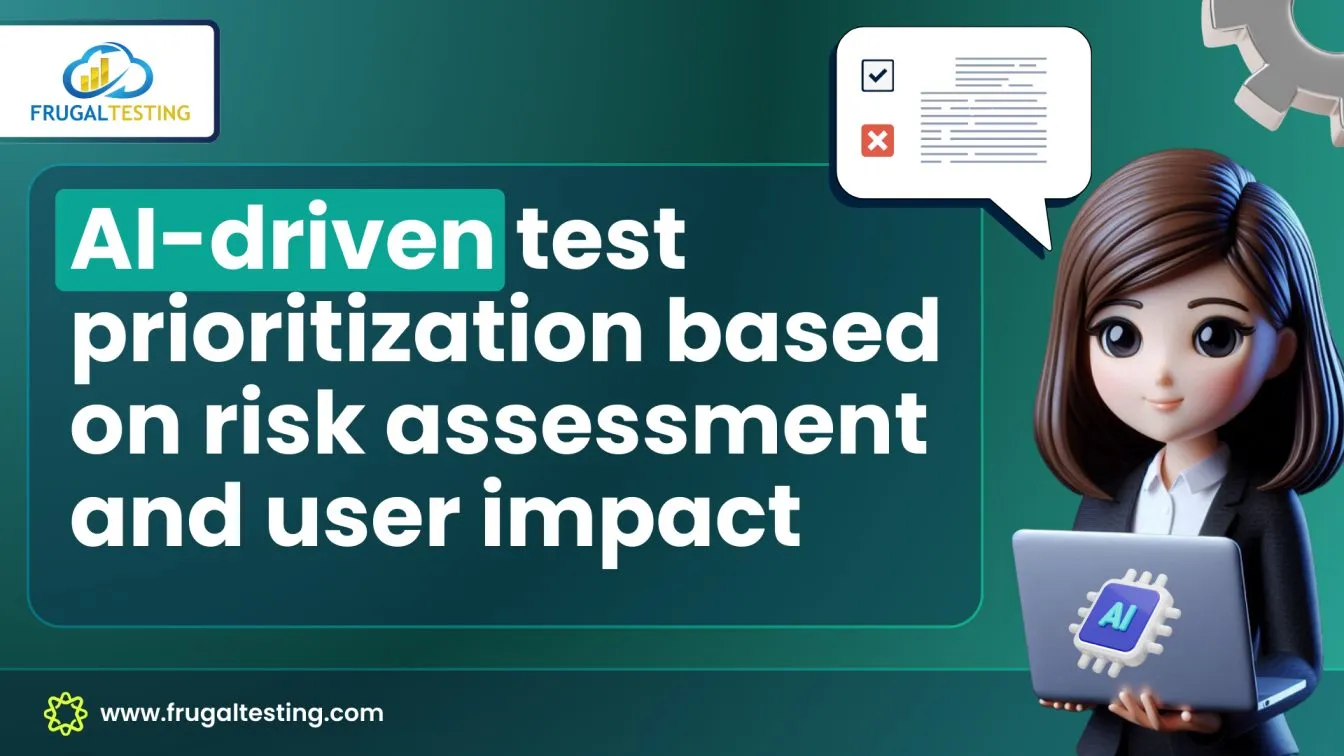

%201.webp)
